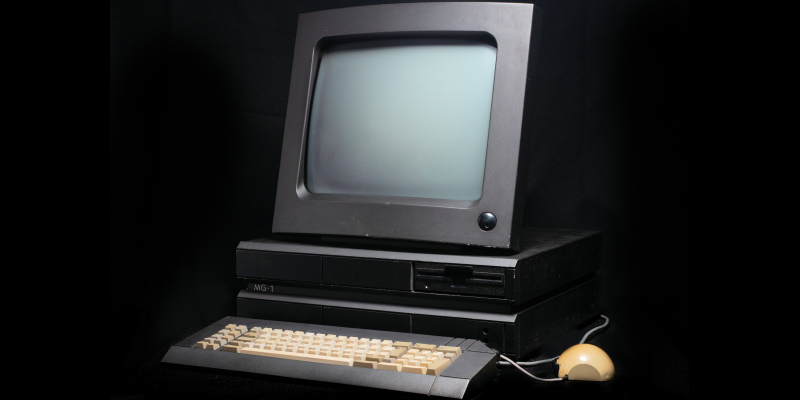
Whitechapel CG1
Whitechapel Computer Works Ltd. (WCW) was a computer workstation company founded in the East End of London, United Kingdom in April 1983. The company was situated in the Whitechapel Technology Centre - a council-funded high-technology enterprise hub - and began the design of their first workstation model in August 1983, shipping the first units by September 1984. Data from a York machine was taken to create this machine.
A contemporary evaluation of a 40 MB hard disk system with 2 MB RAM lists an approximate acquisition price of £9,000. While there was no distributor in the United States, the MG-1 was sold in North America by Cybertool Systems Ltd. from 1984 through 1986. A colour version, the CG-1, was also announced in 1986.
This machine brought forward graphics and networking capabilities similar to today’s standards. It was a very specialised machine. It is thought to have been used by the HCI group in computer Science.
Related links
The company's first workstation model was the MG-1 (named after the Milliard Gargantubrain from The Hitchhiker's Guide to the Galaxy). The MG-1 was based on the National Semiconductor NS32016 microprocessor, with 512 KB of RAM (expandable to 8 MB), a 1024 × 800 pixel monochrome display, a 10, 22 or 45 MB hard disk, 800 KB floppy drive, and an optional Ethernet interface, with prices stated as being equivalent to £5,500 for the 10 MB hard disk system, £6,500 for the 22 MB system and £7,500 for the 45 MB system.
A contemporary evaluation of a 40 MB hard disk system with 2 MB RAM lists an approximate acquisition price of £9,000. While there was no distributor in the United States, the MG-1 was sold in North America by Cybertool Systems Ltd. from 1984 through 1986. A colour version, the CG-1, was also announced in 1986, followed by the MG-200, with an NS32332 processor, in 1987.
The MG-1 employed an 8 MHz 32016 CPU with 32082 memory management unit (MMU) and 32081 floating-point unit (FPU), with the MMU being noted in a 1985 article as "suffering from bugs" and being situated on its own board providing hardware fixes.
In order to deliver the machine at prices closer to personal computers than contemporary workstations (such as Sun, Apollo and Perq), design techniques from the personal computer industry were adopted, with a single eight-layer system board being used to hold the CPU and other integrated circuits.